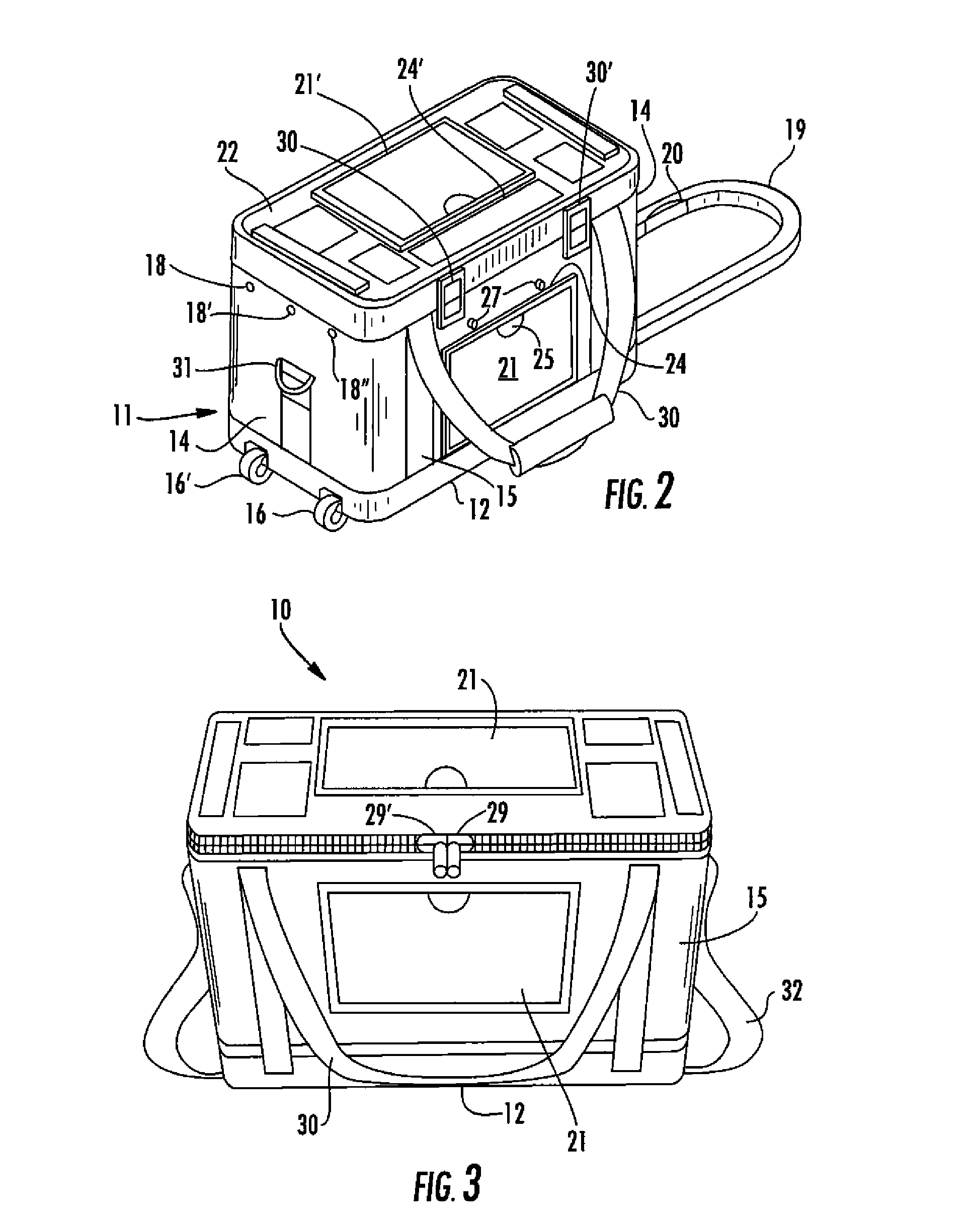Container for transporting blood and blood products
a technology for blood and blood products, applied in the field of containers, can solve the problems of not meeting the needs of documented temperature monitoring in the cooler, unable to transport blood and blood products in time, and difficulty in re-icing while in transit, etc., and achieves convenient storage, convenient cleaning, and convenient size.
- Summary
- Abstract
- Description
- Claims
- Application Information
AI Technical Summary
Benefits of technology
Problems solved by technology
Method used
Image
Examples
Embodiment Construction
[0032] The terms “blood and blood products” as used herein are not intended to be limited terms, but are used in an exemplary, non-limiting manner. Wherever the terms “blood and blood products” are used, it should be appreciated that any type of human or animal blood, cells including stem cells, bone marrow, donor organs, tissue products, plasma concentrates, specimens and the like are intended to be covered.
[0033] By reference to the exemplary drawings in detail wherein like numerals indicate like elements throughout the various views, there is shown in FIG. 1 an exemplary container 10 for transporting blood and blood products in accordance with the invention.
[0034] The container 10 can include an outer case 11 that may be formed from soft, flexible, lightweight material such as ballistic nylon, vinyl or canvas, or a hard rigid material for more durability, or any other suitable materials generally known and used by persons skilled in the art. The outer case 11 is preferably made...
PUM
 Login to View More
Login to View More Abstract
Description
Claims
Application Information
 Login to View More
Login to View More - R&D
- Intellectual Property
- Life Sciences
- Materials
- Tech Scout
- Unparalleled Data Quality
- Higher Quality Content
- 60% Fewer Hallucinations
Browse by: Latest US Patents, China's latest patents, Technical Efficacy Thesaurus, Application Domain, Technology Topic, Popular Technical Reports.
© 2025 PatSnap. All rights reserved.Legal|Privacy policy|Modern Slavery Act Transparency Statement|Sitemap|About US| Contact US: help@patsnap.com



